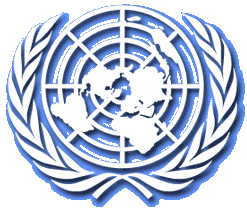News, May 2008
|
Editorial Note: The following news reports are summaries from original sources. They may also include corrections of Arabic names and political terminology. Comments are in parentheses. |
US Missile Strike Kills 10 Somalis, Including Leader Resisting Ethiopian Occupation, Aden Haji Ayro
Note to readers:
The following reported is edited to emphasize that Somali resistance fighters are fighting the US-backed Ethiopian occupation of their country. All other references to smear Somalis and their struggle for freedom are deleted, particularly terms like militant and insurgent.
US missile strike kills a leader in Somalia
By MOHAMED OLAD HASSAN Associated Press Writer
May 1, 4:24 PM EDT
MOGADISHU, Somalia (AP) --
U.S. missiles destroyed the house of a Somali commander fighting the US-backed Ethiopian occupation of Somalia, killing him and 10 others Thursday in a pre-dawn attack that analysts warned could torpedo peace talks.
The killing of Aden Haji Ayro comes amid escalating fighting against the Ethiopian occupation and a spiraling humanitarian crisis in the Horn of Africa nation.
Somali resistance fighters have staged a series of attacks on towns in the months leading up to the U.N.-sponsored talks, scheduled to start May 10. They typically hold the towns for a few hours, free people from jails, then withdraw with captured weapons.
The Ethiopian-backed Somali puppet government officials have said Ayro, was believed to be in his 30s.
The U.N.-backed talks, which are slated to be more inclusive than previous rounds, offered a slim hope of bringing together the disparate groups in the armed resistance against the Ethiopian occupation of Somalia.
Thursday's attack has damaged the negotiations, said Rashid Abdi, an analyst at the International Crisis Group.
Capt. Jamie Graybeal, a spokesman for U.S. Central Command, confirmed there was a U.S. airstrike early Thursday in the vicinity of the central Somali town of Dusamareeb.
Another U.S. defense official, who sought anonymity because he was not authorized to speak on the record, confirmed the strike targeted Ayro.
The U.S. missiles left a smoldering hole where Ayro's home had stood in Dusamareeb.
"The bodies were beyond recognition, some of them cut into pieces, and those wounded have been severely burned," resident Nur Farah told The Associated Press.
Local elder Ahmed Mumin Jama said the house was "totally destroyed," as were other houses nearby. Of the 11 dead, five bodies were retrieved from Ayro's house, he said, while the rest came from surrounding homes. Four people were being treated for wounds.
Shaikh Muqtar Robow, a spokesman for the al-Shabab militia that Ayro led, called Ayro a martyr for the cause of liberating Somalia and vowed to carry out retaliatory attacks.
"Our brother martyr Aden Hashi, has received what he was looking for - death for the sake of Allah at the hands of the United States," he told The Associated Press.
He said another senior al-Shabab leader, Shaikh Muhidin Mohamud Omar, also was killed in the attack.
The U.S. has backed Somali warlords promising to fight the resistance fighters, including some accused of human rights abuses. But the strategy has deepened anti-American sentiment.
Ayro's al-Shabab is the armed wing of the Council of Islamic Courts movement that aims to liberate Somalia. It launches daily attacks on the shaky, U.N.-backed Somali government and its Ethiopian allies.
Neighboring Ethiopia sent troops into Somalia in December 2006 that drove the courts movement members from the capital and parts of southern Somalia. But al-Shabab continues to wage an Iraq-style resistance.
Iise Ali Geedi of Somali University in Mogadishu said the killings will fuel suspicions the United States is using the talks as a fig leaf.
Abdi said the killings may not greatly impair the Somali resistance, because Ayro had taken a lesser role in the fighting after being wounded in a U.S. airstrike in January 2007.
"The fact that he was killed in his house in his hometown shows he was not actively engaged in the struggle," Abdi said, although it was impossible to say to what extent Ayro was involved in strategy and planning.
In any event, analysts said, the Somali resistance to the US-backed Ethiopian occupation has recently become more decentralized. Several different leaders with different agendas support the resistance, so the death of one or two al-Shabab commanders may not have a significant impact.
There are many different and shifting alliances in the Somali resistance. There is a faction, however, that is made up of warlords, politicians and businessmen that is willing to take part in the peace talks. The faction's primary concern is the withdrawal of Ethiopian forces from Somalia.
In the past year, the U.S. military has attacked several resistance members in Somalia.
U.S. warships pounded Somalia's remote coastal northeast in June 2007, after a gunbattle with Somali government forces that left eight resistance fighters dead.
Somalia has been without an effective government for nearly 20 years. The United States sent troops in 1993 to back a massive U.N. relief operation for thousands of civilians left starving by the fighting.
But the U.S. attacked the home of a warlord, killing scores of civilians including women and children. Somali militiamen retaliated, bringing down two Black Hawk helicopters and killing 18 U.S. servicemen whose bodies were dragged through the streets. U.S. troops withdrew after that.
In the past year, fighting between Somali resistance fighters and Ethiopian and government troops has killed thousands of people and driven hundreds of thousands from their homes.
---
Associated Press writers Katharine Houreld in Nairobi, Kenya, and Jennifer N. Kay in Miami contributed to this report.
Fair Use Notice
This site contains copyrighted material the use of which has not always been specifically authorized by the copyright owner. We are making such material available in our efforts to advance understanding of environmental, political, human rights, economic, democracy, scientific, and social justice issues, etc. We believe this constitutes a 'fair use' of any such copyrighted material as provided for in section 107 of the US Copyright Law. In accordance with Title 17 U.S.C. Section 107, the material on this site is distributed without profit to those who have expressed a prior interest in receiving the included information for research and educational purposes. For more information go to: http://www.law.cornell.edu/uscode/17/107.shtml. If you wish to use copyrighted material from this site for purposes of your own that go beyond 'fair use', you must obtain permission from the copyright owner.
|
|
|
|
||
|
||||||


